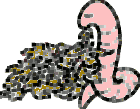
Main index
Introduction
Biology
Classification
Native/Exotic
Importance
Identification
Projects
References
Contacts
info@dunghillpress.com
Note: colours are generally only on the dorsal (back) side of the worms.
It is often difficult to tell which is the head of an earthworm, and also difficult to see the colouring. A quick (small) wash will help as the worm will stretch out as a result of the water and the colouring will show better. This will also help to identify the head end.
It is best to ID mature worms as colours can change with maturity.
In Tasmanian agriculture most earthworms are exotic (introduced from the British Isles), and the following are seen;
| Aporrectodea caliginosa (endogeic: the small field worm, or the ‘grey worm’). Pale pink above the saddle. Endogeic species working to a depth of around 20cm. Often seen in very close association with the large field worm. Typically 60 to 80mm in length. | 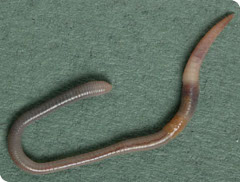 |
| Aporrectodea longa (anecic: the large field worm, or the ‘black-headed worm’). Dark grey-black around the head (on the dorsal side), with the rest of the body pale brown. Permanent to semi-permanent burrows down to around 200cm. Large casts at burrow head. Length around 100 to 170 mm, 4 to 9 mm diameter. | 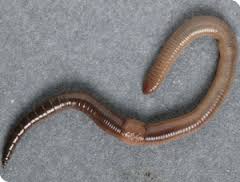 |
| Aporrectodea trapezoids (endogeic: also can be easily mistaken for longa from France- ‘the purple worm’). Dark grey/black along the entire upper length of the body. Can be mistaken for longa. Length 50 to 150 mm, diameter 3 to 8 mm. Most likely seen in the drier regions of the State (Central North, Midlands and South).. | 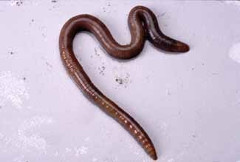 |
| Lumbricus rubellus (egigeic: the ‘dung worm’, or the ‘red wriggler’). An iridescent red (ruby red) colouring along the entire upper length of the body. Wriggles enthusiastically when handled. Generally found in dung pats. Length 50 to 130 mm.. | 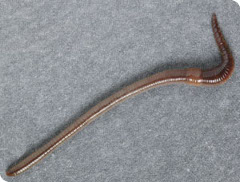 |
| Lumbricus terrestris (anecic: the ‘night crawler’). So far only identified in Launceston. An anecic species that would be valuable for agriculture. Length 200 to 250 mm. The photo shows terrestris mating.. | 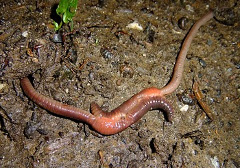 |
| Octolasium cyaneum (anecic: the ‘blue-grey’ worm, of the ‘yellow tail’ worm). Not often seen, a deep digging species. Readily identified by the yellow tail. This species is also a deep digger (anecic).. | 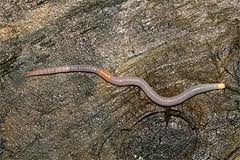 |
| Another species very occasionally seen in paddocks is the ‘green worm’, Aporrectodea chlorotica (I have seen this species on King Island) NB: The common composting worm, or ‘tiger worm’, (Eisenia fetida), is not seen in paddocks as it needs a high level of nutrients.. |